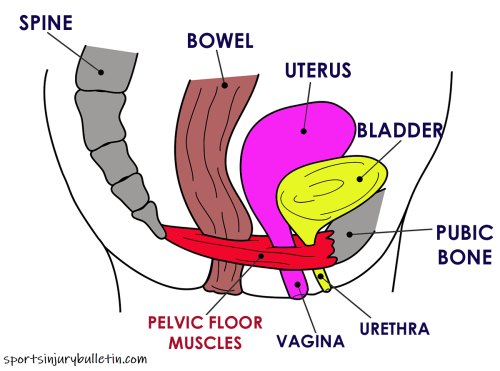Runners are comfortable talking about most awkward mishaps on the run but there’s one topic you don’t hear too often and that’s leaking while running.
And yet, research has established that as many as 30% of female runners experience this at some point, which is similar to the current prevalence in the general population.
There are countless women suffering from urine leakage whilst running, which is known as stress urinary incontinence, and unfortunately most women don’t feel comfortable talking about it or seeking help.
What is stress urinary incontinence?
Stress urinary incontinence (sometimes referred to as stress incontinence) is perhaps the most widely known type of urinary leakage, which is when leakage of urine occurs with coughing, sneezing or laughing, or with higher impact exercise involving bouncing and jumping.
This can create a huge barrier to running and participating in other activities that promote a happy and healthy lifestyle.
As running is a high-impact exercise, increases in abdominal pressures and huge ground reaction forces occur when we hit the ground.
Our bones, leg muscles and ligaments absorb these forces, however, some are transmitted to the pelvic floor. If the pelvic floor muscles are unable to counteract these increases in pressure, leakage may occur.
Additionally, there may also be occasions when the pelvic floor muscles are holding tightly and have difficulties in relaxing which will affect their ability to function optimally.
There are several factors that may contribute to stress urinary incontinence, and if we are to delve deeper, it is important for us to understand a bit more of our anatomy.
Function and importance of pelvic floor muscles
The pelvic floor muscles are located at the bottom of the pelvis and are attached from the pubic bone to the sit bones and the back of the tailbone.

Source: Sports Injury Bulletin
These muscles play a key role in bladder control and preventing leakage, supporting the organs, and they form part of the trunk muscular core.
Certain events like pregnancy and childbirth may have an impact on pelvic floor dysfunction.
Unfortunately, there is a misconception that urinary incontinence is a normal consequence of pregnancy and childbirth, but it is important to realise that despite being common, it is not necessarily inevitable.
Chronic constipation, as well as being overweight will also result in increased pressure placed on the pelvic floor muscles.
Four tips to help with leaking
1. Strengthen your leg muscles
Leg muscles and those around the pelvis play a vital role in absorbing some of the ground reaction forces.
This means that the stronger these muscles are, the better.
Strengthening the calves, hamstrings, quadriceps and glutes can really help and should form a regular part of your routine.
2. Improve core breathing
The pelvic floor muscles form part of our deep core along with the diaphragm, abdominal and back muscles.
These muscles work together like a canister in that when we inhale, the diaphragm lowers and the pelvic floor muscles lengthen, and as we exhale the diaphragm and pelvic floor rise.
This healthy range of motion is important in absorbing ground reaction forces.
Constantly contracting your abdominals, as well as potentially causing more pressure down onto your pelvic floor, will alter the way you are breathing, and both of these factors may contribute to leakage.
So being aware of how you are breathing, particularly noticing if you are breath-holding is another important consideration in the management of leakage with running.
3. Improve running form
Keep in mind that running form can play a huge role.
Over-striding and landing heavily can create more forces to contend with, thus it may also be important for you to consciously think of running more lightly and landing close to your body.
4. Consult a pelvic health physiotherapist
A pelvic health physiotherapist will listen to your concerns, base their assessment on your problems and then advise you on appropriate lifestyle factors which may involve education around bladder and bowel health as well as recommendations on pelvic floor muscle exercises along with general exercise guidance.
Many women tend to suffer in silence and are often not comfortable raising this topic with their medical providers.
If this is an issue that affects you, know that you are not alone, but also know that there are things you can do to help and that there are health professionals available to help keep you running happily and confidently.
Find your closest Lifecare clinic offering women’s health services to book an appointment.
Written by Arifa Tajbhai, Senior Physiotherapist, Lifecare Prendiville
Arifa is a dedicated senior physiotherapist with over a decade of experience across diverse clinical settings in South Africa, Botswana, and Canada. Arifa is committed to helping her clients achieve their full potential through a holistic approach to care. Driven by her passion for improving health and quality of life, her special interests include women’s health, sports injuries, clinical exercise, Pilates, and the management of musculoskeletal conditions.

